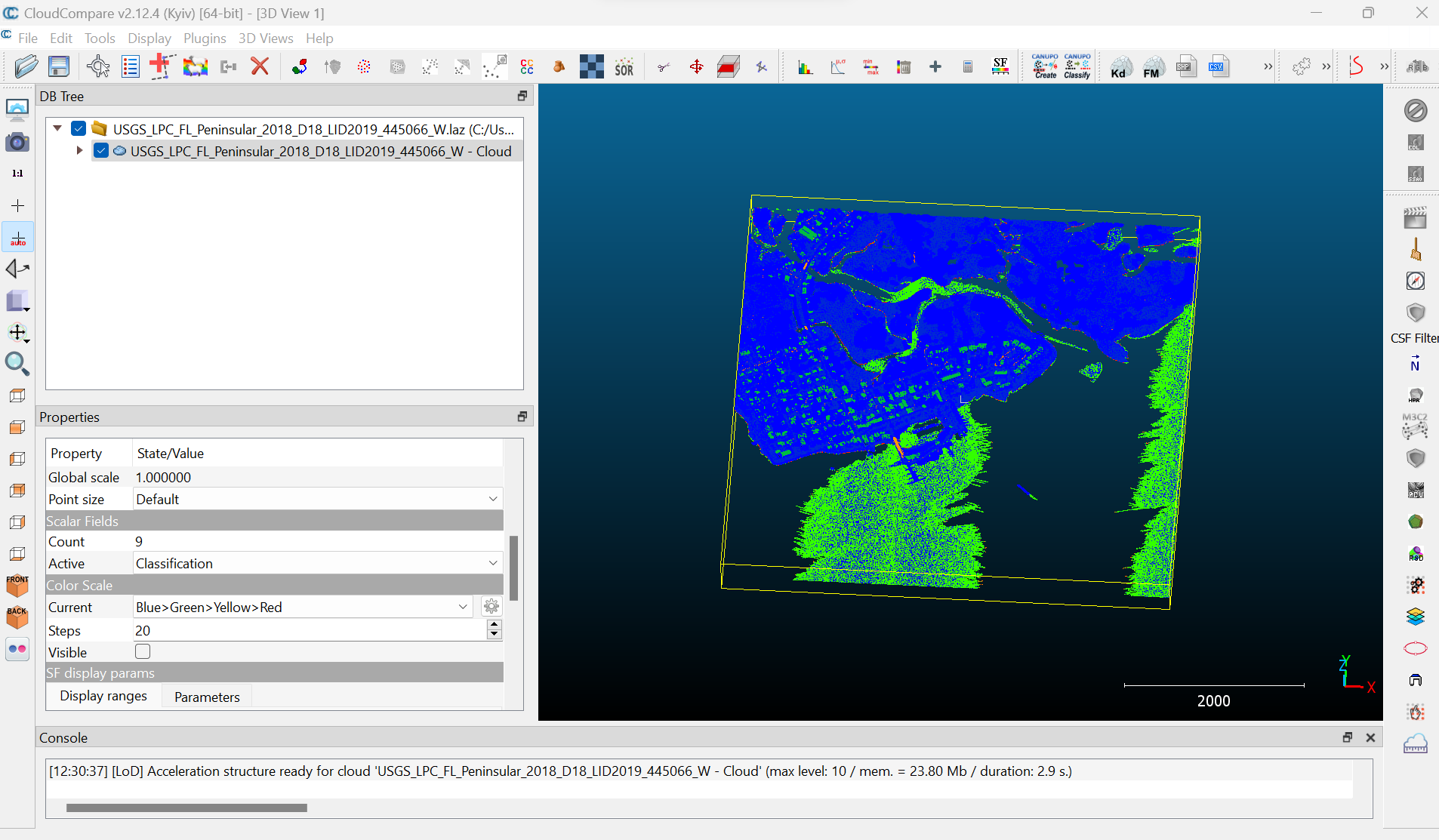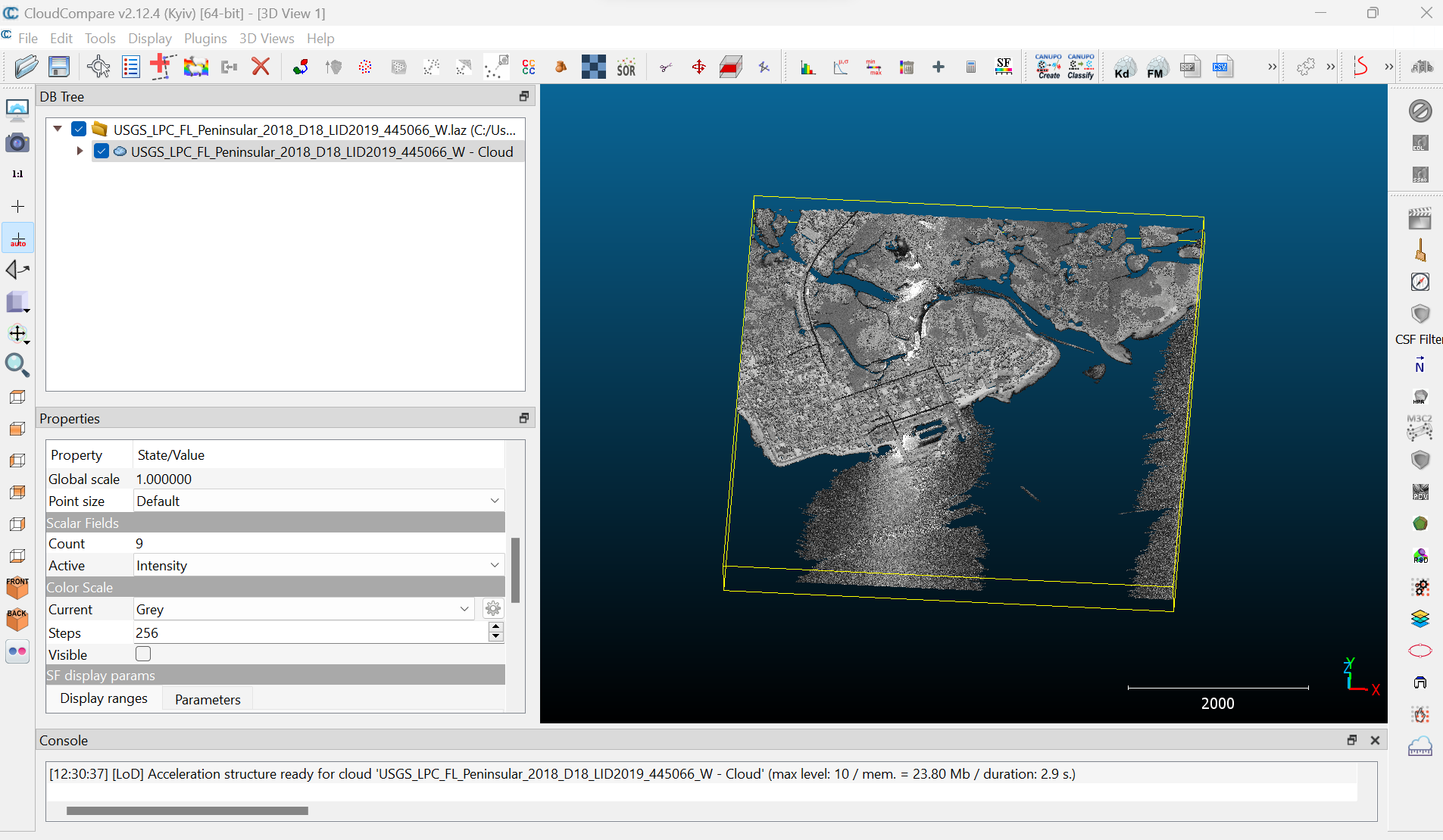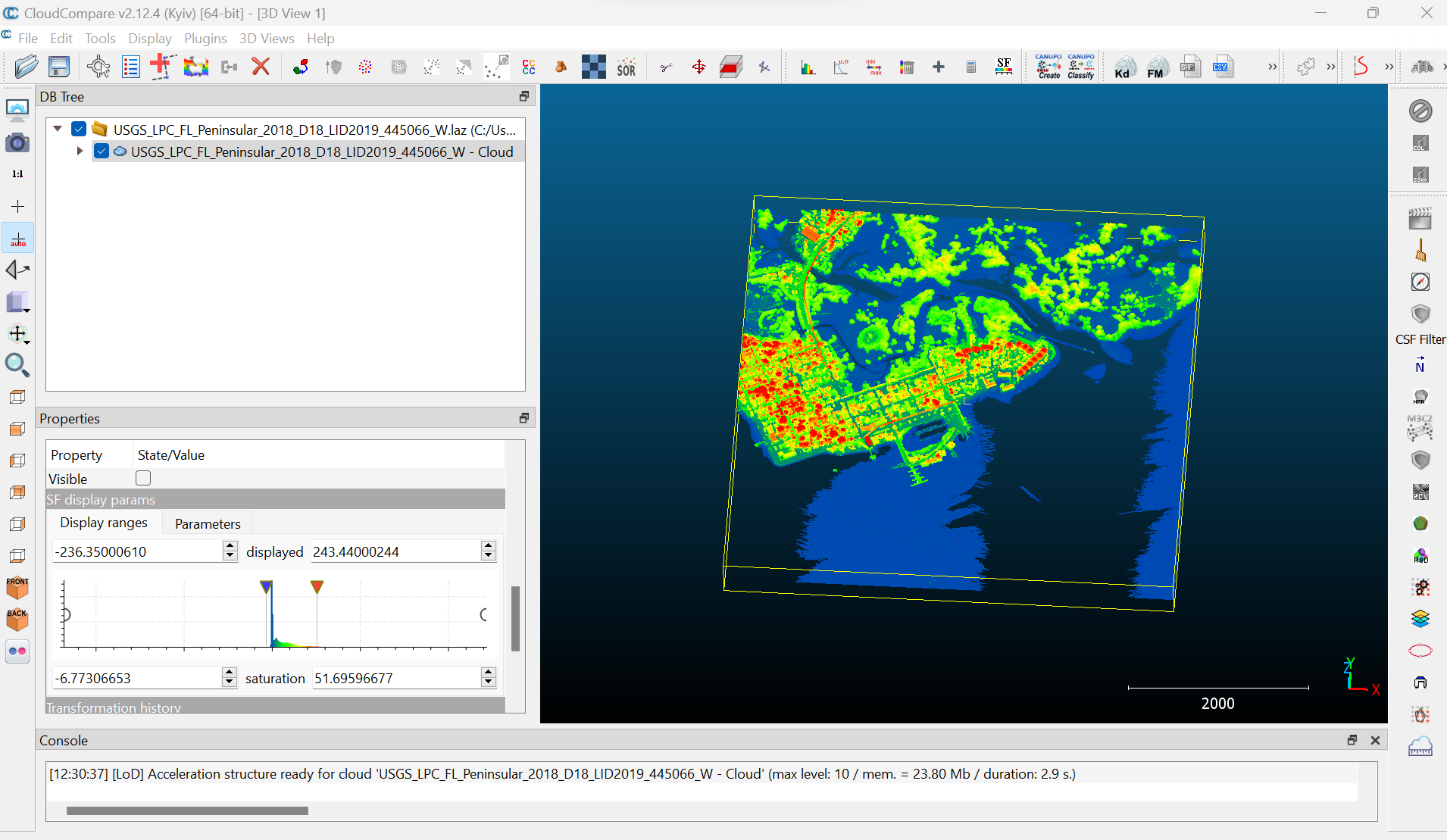Visualizing Lidar Data in Cloud Compare#
Point cloud data can be viewed with several types of software. The Florida Peninsular Lidar data are available in .laz format, which is a zipped point cloud format. To view the point cloud in ArcGIS, the data must first be converted to the standard .las format. LAStools supports point cloud conversion through the Command Prompt.
Converting Point Cloud File Types#
cd C:\LAStools\bin
las2las -i "..\USGS_LPC_FL_Peninsular_2018_D18_LID2019_442972_W.laz" -o "..\USGS_LPC_FL_Peninsular_2018_D18_LID2019_442972_W.las"
Cloud Compare#
Alternatively, Cloud Compare already supports .laz format, and the above step can be skipped. Load data in Cloud Compare under File < Open.

The default visualization uses RGB colors of the aerial view of the point cloud. The Florida Peninsular Lidar data do not include RGB colors. For a more useful visualization, select the point cloud in Cloud Compare and scroll down to Scalar Fields under Properties. Choose Classification:

Or Intensity:

Extracting Elevation Data#
We can also extract elevation data to a new Scalar Field. Go to Edit < Scalar Fields < Export coordinate(s) to SF(s). Make sure Z is selected in the next window and click OK. Scalar Fields under Properties should automatically be updated to Coord.Z. Under SF display parameters under Properties, you may have to adjust the sliders to change the minimum and maximum display values to improve the visualization.

Updating Default Visualization#
You can update the default visualization by replacing RGB with your preferred visualization, for example, elevation. Go to Edit < Scalar Fields < Convert to RGB. Choose No (do not mix with existing values). You can also delete all other Scalar Fields except the default to save a smaller file for sharing. Go to Edit < Scalar Fields < Delete all (!). You can also reduce the file size by choosing Edit < Subsample and selecting a min. space between points (values from 1 to 3 feet, for example) to reduce the point cloud density. Finally, Save your point cloud as a new file.
